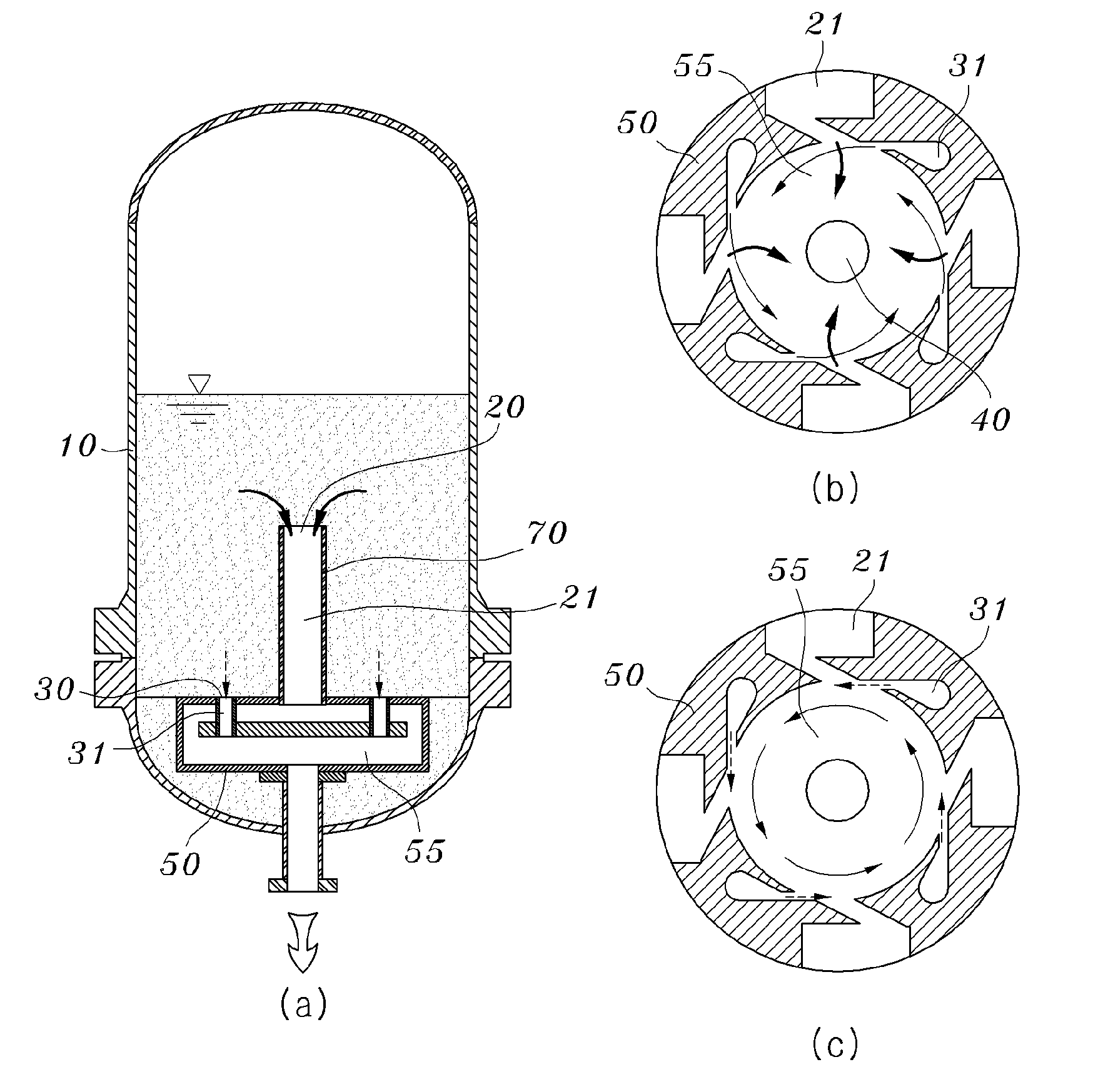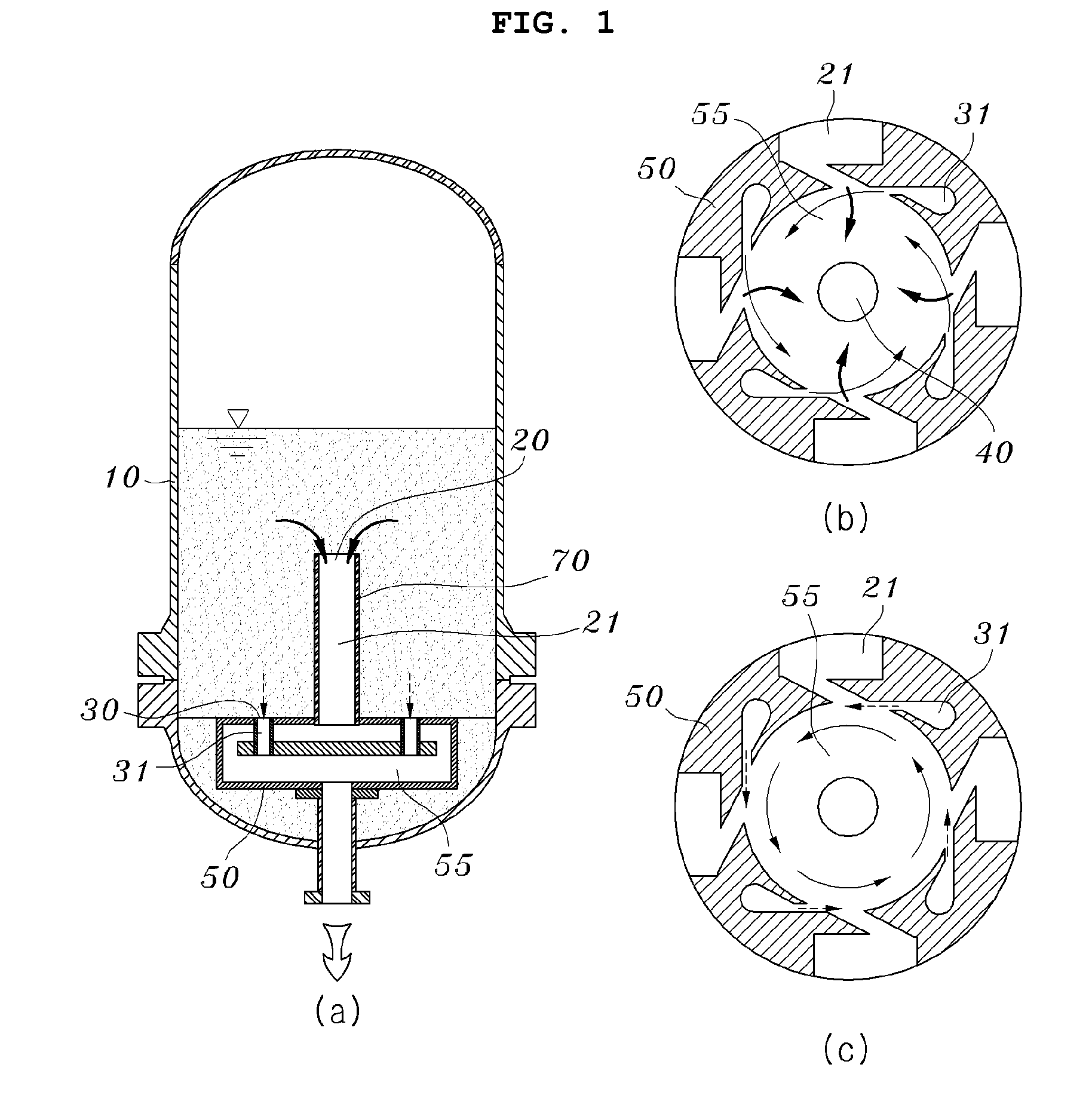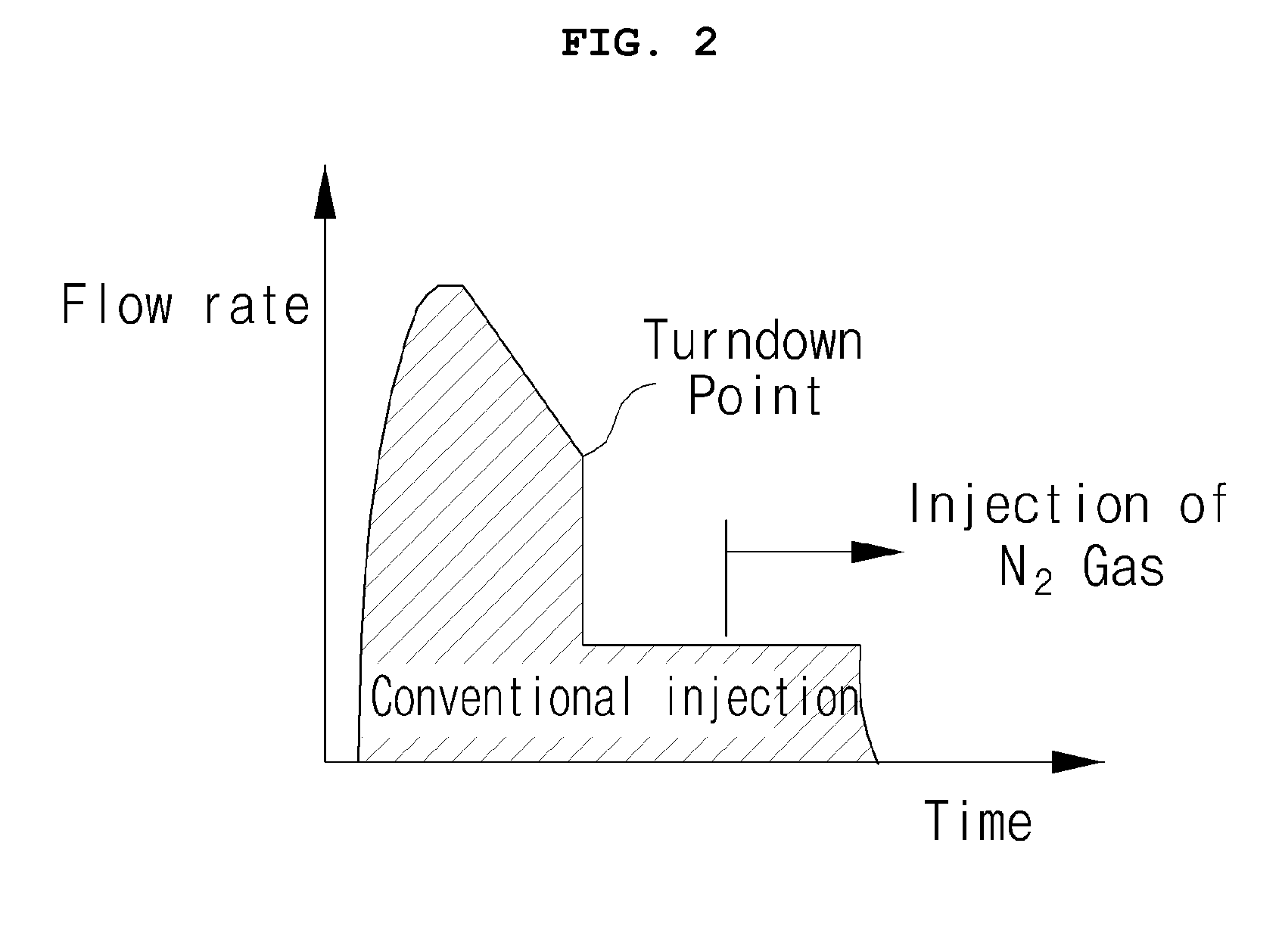Safety injection tank with gravity driven fluidic device
a fluid injection tank and safety technology, applied in nuclear engineering, greenhouse gas reduction, nuclear elements, etc., can solve the problems of reducing the accuracy of thermal hydraulic analysis of the reactor system, unable to efficiently estimate the turndown ratio between the maximum and minimum flow rate, and difficulty in controlling the turndown ratio. , to achieve the effect of preventing an early injection of nitrogen gas, reducing the effective volume of discharged emergency core cooling water, and easy control of the turndown ratio
- Summary
- Abstract
- Description
- Claims
- Application Information
AI Technical Summary
Benefits of technology
Problems solved by technology
Method used
Image
Examples
Embodiment Construction
[0042]Reference will now be made in greater detail to a preferred embodiment of the invention, an example of which is illustrated in the accompanying drawings. Wherever possible, the same reference numerals will be used throughout the drawings and the description to refer to the same or like parts. Further, in the flowing description, a detailed description for the well-known construction and well-known function thereof will be omitted in an effort to avoid confusion of the gist of the present invention.
[0043]First, the operational theory of a safety injection tank 100 having a gravity-driven fluidic device 130 according to the present invention, in which the gravity-driven fluidic device 130 completely passively controls a high flow inlet port 123 in response to a variation in the water level of the emergency core cooling water (ECCW) 112 inside the tank 100, will be described in brief hereinbelow.
[0044]FIG. 4A is a sectional view of the safety injection tank 100 having the gravity...
PUM
 Login to View More
Login to View More Abstract
Description
Claims
Application Information
 Login to View More
Login to View More - R&D
- Intellectual Property
- Life Sciences
- Materials
- Tech Scout
- Unparalleled Data Quality
- Higher Quality Content
- 60% Fewer Hallucinations
Browse by: Latest US Patents, China's latest patents, Technical Efficacy Thesaurus, Application Domain, Technology Topic, Popular Technical Reports.
© 2025 PatSnap. All rights reserved.Legal|Privacy policy|Modern Slavery Act Transparency Statement|Sitemap|About US| Contact US: help@patsnap.com



